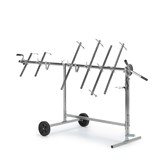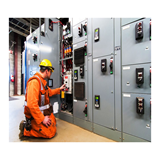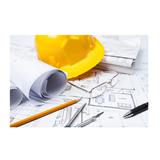Compare rotating telehandler prices in Australia. Get expert tips on buying, financing, compliance, parts and maintenance.
Key Takeaways
- Prices: Rotating telehandlers in Australia range between $100,000 to $300,000, depending on the model, features, and capabilities.
- Types: The main types include compact, heavy-duty, and high-lift telehandlers. Each is designed for different lifting capacities, terrains, and working environments.
- Operating Costs: Consider an annual budget of about 5-10% of the purchase price for maintenance, repairs, and inspections.
- Financing: Flexible financing options like equipment loans and leasing can reduce upfront costs.
- Compliance: Rotating telehandlers must meet Australian Work Health and Safety (WHS) standards, and operators must undergo certified training.
- Warranties: Manufacturers typically offer 1-3 year warranties, with additional protection for key components like the hydraulic system and drivetrain.
Introduction
Rotating telehandlers, also known as rotating boom forklifts, are essential pieces of equipment used in construction, mining, agriculture, and various other industries. These versatile machines provide superior lifting and material handling capability, allowing operators to work in challenging environments where other machines may not reach. If you're considering purchasing one for your business in Australia, this guide will equip you with all the essential information you need, from pricing and types to financing options and compliance requirements.
Types of Rotating Telehandlers
Rotating telehandlers come in a variety of types and configurations to suit different operational needs. When selecting one, it’s essential to choose a machine that aligns with the specific requirements of your site and business.
1. Compact Rotating Telehandlers
- Lift Capacity: 2,500 to 3,500 kg
- Max Reach: 14–16 metres
- Best for: Tight spaces, urban construction sites, and residential building projects.
- Key Features: Highly manoeuvrable with small turning radius, low-profile design.
2. Heavy-Duty Rotating Telehandlers
- Lift Capacity: 4,000 to 5,000 kg
- Max Reach: 18–20 metres
- Best for: Large construction sites, heavy lifting operations, and outdoor environments.
- Key Features: Robust build, larger tyres for rough terrain, higher lifting capacity.
3. High-Lift Telehandlers
- Lift Capacity: 3,000 to 4,000 kg
- Max Reach: 20 metres and above
- Best for: High-rise building projects, outdoor industrial applications, and projects requiring maximum reach.
- Key Features: Exceptional lifting height, ideal for stacking materials at significant heights.
Rotating Telehandler Prices
The prices for rotating telehandlers in Australia vary based on model, size, features, and whether the machine is new or used. Below is a price breakdown to guide your purchasing decision.
New Rotating Telehandlers
- Compact models: $100,000 – $150,000
- Heavy-duty models: $150,000 – $250,000
- High-lift models: $250,000 – $300,000
Used Rotating Telehandlers
- Compact models: $60,000 – $100,000
- Heavy-duty models: $100,000 – $180,000
- High-lift models: $150,000 – $220,000
Prices will also depend on factors such as age, condition, hours of use, and any additional attachments or features. When purchasing a used model, consider its age and history to gauge its potential lifespan and any maintenance needs.
Factors to Consider When Buying a Rotating Telehandler
When choosing a rotating telehandler, there are several key factors to consider to ensure it meets your operational needs:
- Terrain Suitability: Will the telehandler be used on flat or rough, uneven terrain? Opt for a model with larger tires and a more robust build if working on rugged terrain.
- Lifting Capacity: Consider the weight of the materials you'll be lifting. Ensure the telehandler has the capacity to handle these loads efficiently. Heavy-duty models are ideal for larger weights.
- Reach and Height: Assess the lifting height and reach required for your tasks. If you need to stack materials high, a high-lift telehandler will be necessary, while lower reach models are suited for closer-range tasks.
- Worksite Size: If your worksite is restricted in space, choose a model with a smaller turning radius. Compact telehandlers are designed for tight spaces and urban construction environments.
Operating Costs of Rotating Telehandlers
While the upfront cost of purchasing a rotating telehandler is significant, the operational costs should also be factored into your budget. Key costs include:
1. Fuel
- Diesel models are the most common and generally consume around 10–20 litres per hour, depending on the size and load. Expect to spend between $1,500–$3,000 per year for fuel.
2. Maintenance
- Routine servicing such as oil changes, tire replacements, and hydraulic checks is essential for keeping the telehandler running smoothly.
- Estimated Annual Maintenance Cost: $5,000–$15,000, depending on model and usage.
3. Repairs
- If the telehandler experiences significant wear or damage, repairs could range from $2,000 to $10,000, depending on the severity of the issue.
4. Insurance
- Insurance for a rotating telehandler in Australia typically costs $2,000–$4,000 per year, depending on the machine's value and your business’s insurance package.
Financing Options for Rotating Telehandlers
Purchasing a rotating telehandler is a significant investment, but there are several financing options available to help you manage the cost.
1. Equipment Loans
- You can secure a loan for the full or partial purchase price of the telehandler. Interest rates typically range from 5% to 9% annually, depending on your creditworthiness.
2. Leasing
- Operating leases and finance leases are two common options. Leasing allows you to spread out payments over a period of 3–7 years, with the option to purchase the telehandler at the end of the lease term. Lease rates vary based on the model and lease terms.
3. Government Grants and Incentives
- The Australian government offers incentives such as the Instant Asset Write-off scheme, which can allow businesses to immediately deduct the cost of new equipment worth up to $150,000.
Maintenance and Parts for Rotating Telehandlers
Maintaining your rotating telehandler ensures it remains reliable and functional for years to come. Regular inspections, preventative maintenance, and timely repairs are key to extending its lifespan.
Essential Maintenance Tasks
- Oil and filter changes every 250–500 hours of operation.
- Hydraulic system checks to ensure proper fluid levels and system performance.
- Tire inspections for wear and tear, especially in rough terrains.
Common Replacement Parts
- Tyres: Cost between $1,000–$3,000 per set, depending on model and usage.
- Hydraulic hoses and filters: Regularly replaced due to wear and tear.
- Boom and mast components: Subject to wear and need periodic inspections.
Warranties for Rotating Telehandlers
Most manufacturers offer a 1–3 year warranty on new rotating telehandlers, which typically covers:
- Hydraulic system
- Engine and transmission
- Structural components (frame, boom)
Extended warranties are often available for an additional cost, and some manufacturers may offer maintenance packages as part of the warranty deal.
Compliance and Certification Considerations
When buying a rotating telehandler in Australia, compliance with local regulations and certifications is crucial for safety and legal operation.
1. Australian Work Health and Safety (WHS) Standards
- The telehandler must meet the AS 1418.19 standard for mobile cranes and elevating work platforms.
- The machine must be inspected and certified by a licensed inspector to ensure it meets all operational safety standards.
2. Operator Certification
- Operators are required to hold a High-Risk Work Licence (HRWL) for operating telehandlers in Australia.
- Regular training and recertification are also necessary to ensure safe operation.
Common Questions About Rotating Telehandlers
1. What is the maximum lifting height of a rotating telehandler?
- The maximum lifting height for a rotating telehandler can vary between 14 and 30 metres, depending on the model and configuration.
2. How long does a rotating telehandler last?
- A well-maintained rotating telehandler can last 10–15 years, depending on usage, maintenance, and working conditions.
3. Are rotating telehandlers easy to operate?
- Yes, rotating telehandlers are designed to be user-friendly, with intuitive controls and features that make operation easier. However, training is required for safe use.
4. Can I use a rotating telehandler on rough terrain?
- Yes, rotating telehandlers are equipped with large tyres and a four-wheel drive system, making them ideal for rough, uneven terrain.
Conclusion
Investing in a rotating telehandler is a smart choice for businesses that require versatile lifting and material handling capabilities. By understanding the various types, pricing structures, financing options, and compliance requirements, you can make an informed decision that fits your operational needs and budget. Be sure to factor in ongoing maintenance costs and ensure your operators are properly trained and certified to maintain safety and efficiency in the workplace.


-160x160-state_article-rel-cat.png)

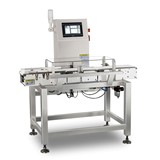
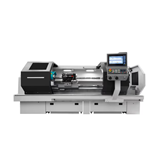
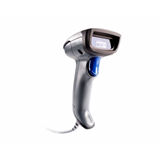
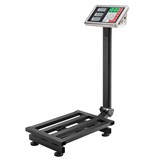

-160x160-state_article-rel-cat.png)

